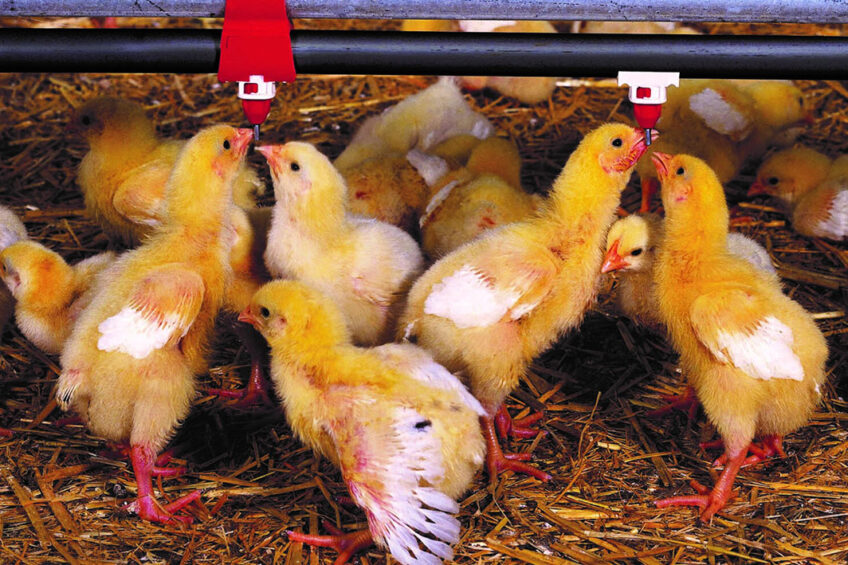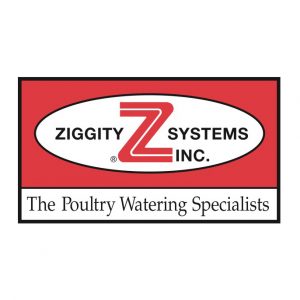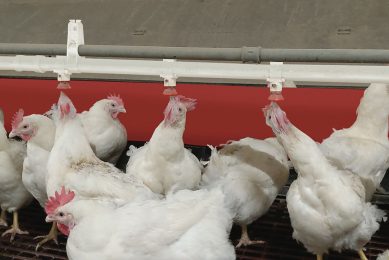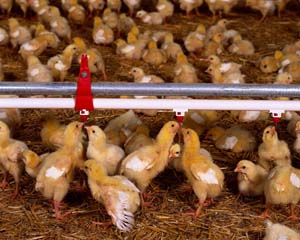Proper drinker management to improve bird welfare

It is critical that water systems in poultry houses are kept clean and that water pressure is managed properly. Ziggity has invested considerable resources to develop watering management tools for enclosed watering systems to help farmers produce healthy flocks and maximise performance.
This article explains why we invest so much energy in this endeavor. Namely, it acknowledges the fact that watering systems play a major role in either enhancing or compromising bird welfare as it relates to dry litter and hygienic water delivery.
The importance of achieving the ideal water pressure
In brief, water pressure that is too high causes water spillage onto the litter. This results in ammonia release that is detrimental to bird performance. Conversely, water pressure that is too low may reduce water ingestion and lead to inadequate feed digestion and compromised weight gain. But there is an optimum water pressure that allows producers to maximise feed conversion and minimise spillage to keep ammonia levels under control.
The difficulty has been for producers to set an ideal water pressure because there has never been a tool available to measure ideal water pressure. A common tool used for this purpose only measures water volume released from a nipple drinker by holding a pin straight up for a given time. However, this does not measure what happens when birds actually drink, as there has never been a chicken that holds the trigger pin up to drink.
Birds use a natural intermittent peck and release drinking behavior at the pin, releasing a drop at a time. What’s more, drinkers are designed in a way that the volume of water released when holding a trigger pin up has no correlation to water volume dispensed when birds peck the trigger pin. So, the common means of measuring water flow provides no useful data whatsoever.
Dry litter is vital for bird health
Additionally, there is a trend toward antibiotic-free/no-antibiotics-ever production as bird health issues increasingly resonate with the public. Producers must pay attention to promoting bird health without using antibiotics. This must include emphasis on maintaining dry floors to manage the birds’ environment in order to reduce the risk of bird health challenges, diseases and other problems caused by wet litter.
In poultry production facilities, dry litter is vital to producing healthy, thriving birds, whereas wet litter creates ammonia and a breeding ground for disease, pododermatitis and reduced bird performance (FCR, undergrades, livability).
Ventilation may help, but it’s better to prevent wet litter occurring in the first place as ventilation varies seasonally and between houses. Keeping litter dry is the best overall solution.
Keeping drinking water clean and hygienic
Bird health is also threatened by a lack of hygienic water, often made difficult by use of open-type watering systems such as one that uses catch cups. Catch cups are promoted as a way to prevent wet litter but are used only because producers have been persuaded to increase water pressure such that drinkers drip and spray.
The problem is that catch cups catch a lot more than water. Observation proves that birds drink from catch cups, which are open drinking vessels that become contaminated and harbor disease-threatening pathogens, such as E. coli, as proven in studies.
When properly managed, totally enclosed nipple-type systems provide hygienic water directly to the bird’s beak. To that end, system management procedures and tools have been developed based on successful field experience, to provide birds with all the water needed while minimising spillage that creates wet litter and an unhealthy environment.
Maintaining bird welfare
Bird welfare is important. Understanding watering principles, and using the most effective management tools and procedures helps ensure that your poultry production facility will meet or exceed current bird welfare standards.
We have created the website www.PoultryWateringU.com to support producers in their goal to maximise flock health and performance.




